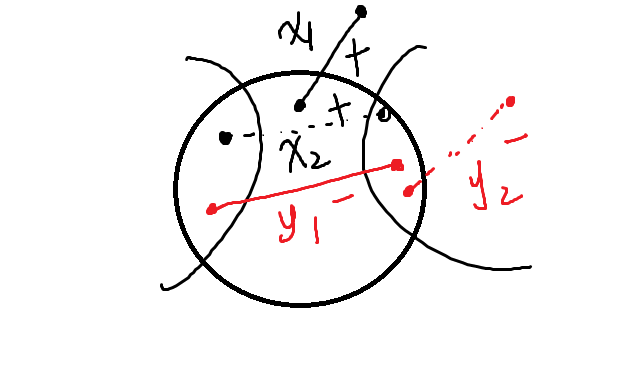C1: Combinatorial Correlation Clustering
This post is based on [1].
Efficient MPC Algorithms for Correlation Clustering
Local Search is a powerful method for clustering problems. Again, this tool shows us its strength in correlation clustering.
Algorithm 1 (Basic 2-approximation local search algorithm)
Let be the solution output by the algorithm and let OPT be the optimum solution.
For each cluster C in OPT,
1) Consider S_C that is by inserting C
into S as a cluster and removing
elements from S.
2) Update S by inserting S_, reducing the cost.
The naive way of finding the is using an exponential algorithm. Now, let us forget how to obtain first and focus on the approximation ratio.

In the above picture, we use with signal to denote the increased cost by inserting into (for the nodes in ). We use with signal to denote the saved cost by inserting into (for nodes in ). Let to denote the common cost between the the optimal algorithm and an algorithm.
Due to local optimality, (it means that we cannot reduce the cost by inserting ), we have that
We use to denote the optimum cost and use to denote the cost of an algorithm. Now, we get that
Then, we have
An improved version of 15/8-approximation
Let be a local optimum clustering with weights .
The Process:
-
Set with weight function ;
-
Double the weight of edges in to get a new weight function where is the edges across clusters.
-
Set with weight function ;
-
Output the best of and .
A Complex Version
Reference
[1]. Combinatorial Correlation Clustering, Vincent Cohen-Addad, David Rasmussen Lolck, Marcin Pilipczuk, Mikkel Thorup, Shuyi Yan, and Hanwen Zhang. Proceedings of the Symposium on Theory of Computing (STOC) 2024.